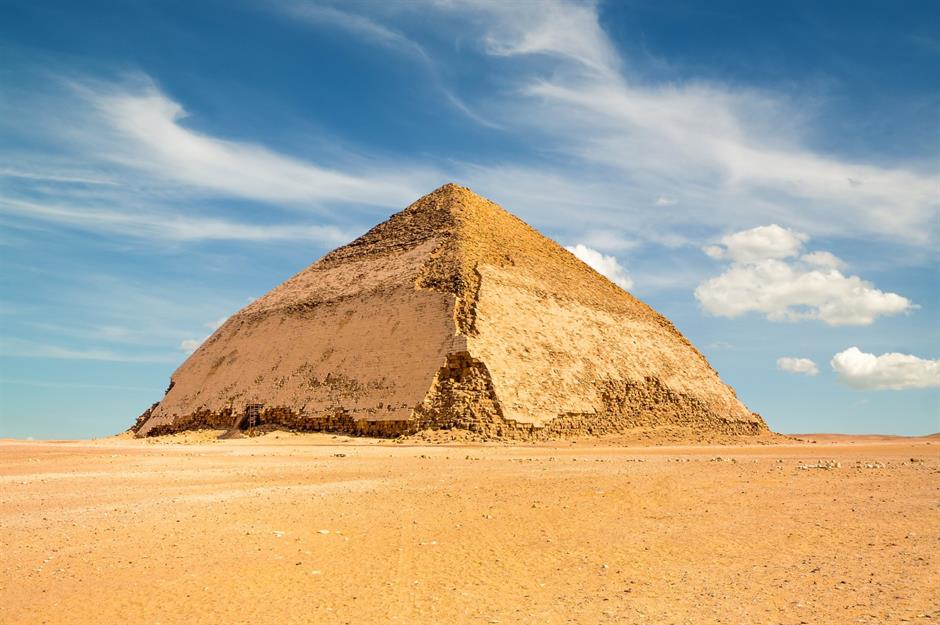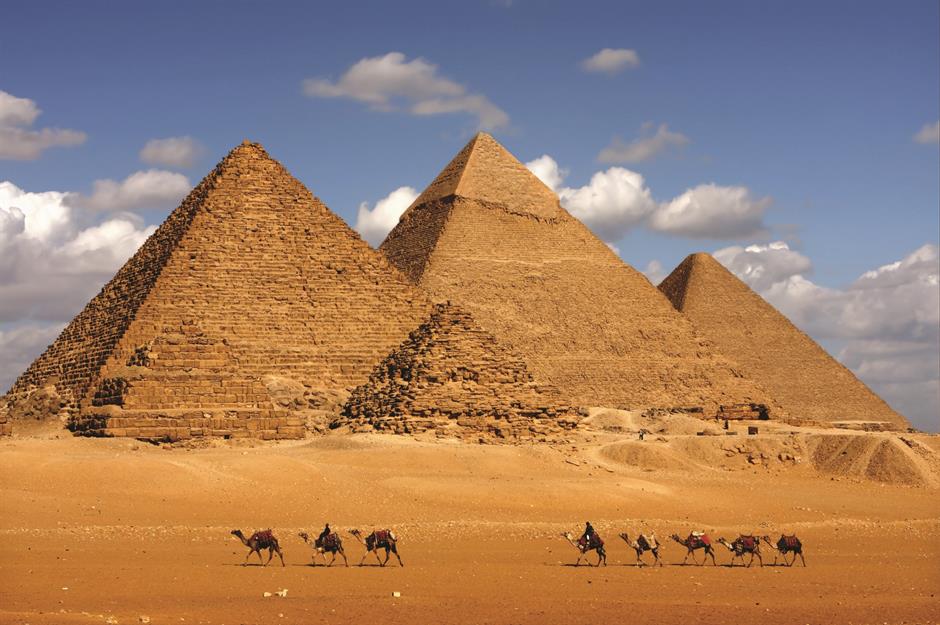The Bent Pyramid and other Ancient Egyptian mysteries
A window into the past
Few cultures have left behind as many fascinating treasures and monuments as Ancient Egypt: the Great Pyramid and Sphinx, the Valley of the Kings, the gold mask of Tutankhamun and the Rosetta Stone are all world renowned, attracting millions of curious visitors per year. Now a new book, Treasures of Ancient Egypt by Nigel Fletcher-Jones, explores the spectacular riches of this ancient world through a selection of stunning photographs. We take a peek inside it here, so you can feast your eyes on Egypt's familiar sights and lesser known relics, and discover the fascinating stories behind them.
Pyramids at Giza
The Pyramid of Khaefre, Giza Plateau
Great Sphinx, Giza Plateau
Statue of Khaefre, Lower Temple, Giza Plateau
The Great Sphinx is joined by the Sphinx Temple and the Valley Temple, which once contained multiple fine statues of King Khaefre – one of these statues is pictured here. It's regarded as a supreme example of artistic skill in representing the king as both all-powerful and divine: the high degree of polishing across all the surfaces would have reflected the available light, and the green veins within the diorite stone would have enhanced the unworldly effect. It can now be seen in the Egyptian Museum in Cairo.
‘Colossi of Memnon’, Memorial Temple of Amenhotep III, Luxor
Great Hypostyle Hall, Karnak Temple
Nearby is the Karnak Temple Complex, an archaeological site rich in treasures and home to one of the great masterpieces of ancient Egyptian architecture. The Great Hypostyle Hall, a jaw-dropping site filled with intricately carved columns, was the vision of Seti I (1294–1279 BC), another New Kingdom pharaoh. The pillared hall is testament to Seti I’s interest in art, since he was "a rare combination of military leader and connoisseur of the arts". The hall – standing before the innermost shine complex of Amun-Re, god of the sun – was intended to represent the primeval swamp land that emerged at the creation.
Ceiling, Great Hypostyle Hall, Temple of Dendera
Cave of the Swimmers, Wadi Sura
Though a far cry from the intricate temples and pyramids of later civilisations, Egypt's rock art offers a glimpse into the innovation and creativity of even the earliest settlers here. The area covered by the Sahara today was formerly made up of savanna grassland and lakes, home to nomadic hunter-gatherer-fishers. Now deep in Egypt’s Western Desert, the Neolithic cave paintings at Wadi Sura show these nomadic peoples occupied in a variety of activities, including, possibly, swimming in the seasonal lakes.
Pectoral of the Goddess Nut, Tomb of Tutankhamun
Outside of the archeological sites themselves, the world's great museums preserve many more Egyptian treasures for posterity. One glittering example is this breastplate (or fitting for a belt, perhaps), which was found in the tomb of one of Egypt's most famous pharaohs (Tutankhamun, 1336–1327 BC). The wings of the sky goddess, Nut, are outstretched and the hieroglyphic text states that the goddess "opens her arms over her son, the king, in protection of his body". It is thought that this object may have originally been made for Tutankhamun’s father, Akhenaten, and it is now held by the Grand Egyptian Museum, Cairo, which is currently under development.
Funerary Mask of Psusennes I, Tomb of Psusennes I, Tanis
Another fascinating museum relic, this funerary mask is among the treasures from Tanis, a city in northeastern Egypt. Today held in the Egyptian Museum, Cairo, it's made from sheet gold (‘the flesh of the gods’), lapis lazuli and glass paste. The false beard curves upwards slightly to indicate the divine status of the dead king Psusennes (1039–991 BC), who was known for his hand in building Tanis' Great Temple and for helping to develop the city. A glass-paste-filled groove runs along the side of the face, imitating the string with which the beard was tied on.
House Shrine of Akhenaten, Nefertiti and Daughters, Amarna
This fascinating relic has found its way from Egypt to Germany and forms part of the collection of Berlin's Egyptian Museum. The image was probably part of an altar to the divine family – ancient Egyptian pharoah Akhenaten, his famed wife Queen Nefertiti and their daughters – and might have represented how they appeared within a particular palace window to the people of Akhetaten. Sunrays ending in ankh signs (hieroglyphic symbols meaning "life") emanate from the Aten (the image of the sun) and onto the royals. Now read about the 60 worldwide wonders we've only just discovered.
Bent Pyramid, Dahshur
Strike just under 20 miles (32km) south of Cairo and you'll hit Dahshur, another important archeological site and home of the Bent Pyramid. This striking structure is one of the pyramids built by King Seneferu (2613–2589 BC), who was father of Khufu, grandfather of Khaefre, and the very first king of Egypt's 4th Dynasty. The lower part of the pyramid rises at an angle of 54 degrees to 154 feet (47m) and then changes to a 43-degree angle, most likely because of construction problems. Now learn the newly discovered secrets of the world's ancient wonders.
Find out more
All images are taken with permission from the book Treasures of Ancient Egypt by Nigel Fletcher-Jones, published by Amber Books Ltd and available via Amazon.

